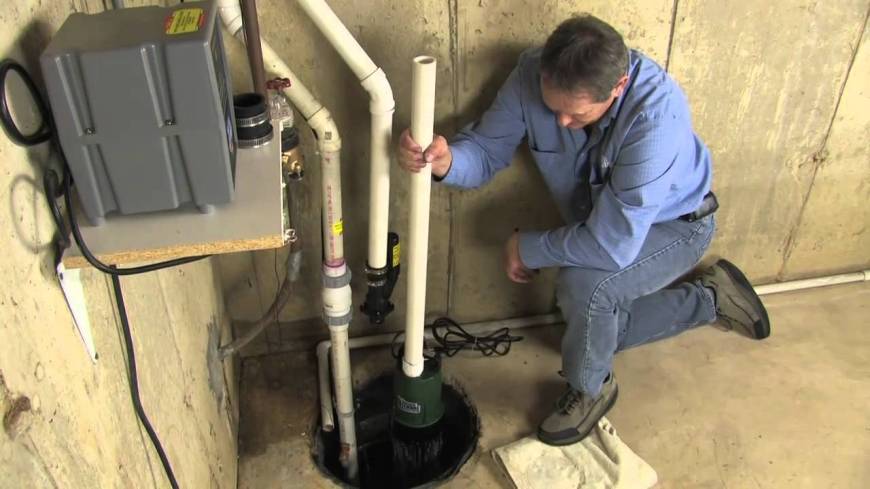What are your beliefs about How to Care for Your Sump Pump?

Sump pumps are critical parts in lots of homes, specifically in areas vulnerable to flooding or extreme dampness. They help prevent water damages by effectively removing excess water from cellars or crawl spaces. Nonetheless, like any other home appliance, sump pumps require normal upkeep to guarantee they function properly when required one of the most. Cleaning your sump pump is a crucial part of its upkeep, and comprehending just how to do it properly can save you from costly repair work and prospective catastrophes.
Introduction
Preserving a clean sump pump is important for its proper performance and long life. Disregarding this important task can lead to blockages, malfunctions, and ultimately, water damage to your residential or commercial property. As a result, learning exactly how to clean a sump pump is critical for house owners that depend on these tools to keep their basements completely dry and safeguarded.
Signs of a Dirty Sump Pump
Recognizing when your sump pump requires cleansing is critical for avoiding prospective breakdowns. Some typical indications that suggest a filthy sump pump include strange noises throughout operation, minimized water flow, and noticeable particles in the pit. If you discover any one of these signs and symptoms, it's essential to cleanse your sump pump immediately to prevent any more problems.
Preparing for Cleansing
Prior to you begin cleansing your sump pump, it's necessary to take some safety precautions. Begin by shutting off the power to the pump to prevent any kind of electric mishaps. Furthermore, put on suitable protective equipment, such as gloves and safety glasses, to shield on your own from dust, particles, and possible pathogens.
Comprehending the Sump Pump
Before diving right into the cleansing procedure, it's vital to have a fundamental understanding of just how a sump pump works. Normally mounted in a pit or basin listed below the basement flooring, a sump pump includes several key parts, including a pump, a float button, and a discharge pipe. When water gathers in the pit, the float switch turns on the pump, which then pumps the water out with the discharge pipeline, away from the building's structure.
Detailed Overview to Cleaning a Sump Pump
Turning off the Power
Begin by separating the power supply to the sump pump to prevent any kind of accidents while cleaning.
Looking For Proper Functioning
Before reinstalling the pump, execute a quick examination to make certain that the float button activates the pump correctly. Pour some water right into the sump pit and observe the pump's procedure. If every little thing is operating properly, you can reconstruct the pump and reconnect the power supply.
Eliminating Particles and Dirt
Use a pail or a scoop to remove any noticeable particles, dirt, or debris from the sump pit. Dispose of the debris properly to avoid it from clogging the pump or the discharge pipe.
Cleansing the Pump and Float Change
Once the pit is clear of debris, meticulously eliminate the pump from the pit. Evaluate the pump and the float switch for any type of indications of damages or wear. Make use of a soft brush or cloth to clean up the surfaces and eliminate any kind of collected gunk.
Flushing the System
After cleaning the pump and float switch, flush the sump pit with tidy water to remove any kind of remaining dirt or sediment. This will help ensure that the pump operates efficiently and successfully.
Upkeep Tips to Maintain Your Sump Pump Clean
Along with routine cleansing, there are a number of upkeep pointers you can follow to keep your sump pump in ideal problem:
Final thought
Cleaning your sump pump is a vital facet of its maintenance and makes sure that it operates efficiently when you require it the most. By adhering to the steps outlined in this guide and incorporating normal maintenance into your regimen, you can expand the life expectancy of your sump pump and safeguard your home from water damages.
How To Inspect And Clean A Sump Pump
There are a few things you may want to look for when inspecting your sump pump. These include:
Leaks: If you notice any leaks around the sump pump, it likely needs to be repaired or replaced. Mud or Water: If there is any mud or water around the sump pump, it’s likely that it’s not working properly and needs to be cleaned. Noises: If you hear any strange noises coming from the sump pump, it may be indicative of a problem. Next, you’ll need to clean the sump pump. If you notice any of these issues, it’s best to clean the sump pump as soon as possible. To do this, you’ll need to remove the pump from its housing. Be sure to have a bucket handy to catch any water that may spill out. Once the pump is removed, use a brush or a spray nozzle to clean off all of the mud and debris. You may also want to check the impeller for damage or wear and tear. If you find any damage, you’ll need to replace the pump.
Once the pump is clean, reattach it to its housing and replace any parts that were removed. Be sure to test the pump before putting everything back in place. Once everything is back in order, put the cover back on the sump pit and refill it with water.
https://elekplumbing.com/blog/how-to-inspect-and-clean-a-sump-pump/

As an enthusiastic person who reads on Cleaning & Maintenance Tips for Your Home's Sump Pump, I thought sharing that chunk was worthwhile. In case you liked our post plz do not forget to pass it around. Thanks for being here. Come back soon.
Check This Out